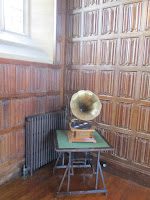Potted
History
In the 1830s
life in villages like Tolpuddle was hard and getting worse. Farm workers could
not bear yet more cuts to their pay. Some fought back by smashing the new
threshing machines but this brought harsh punishments.
 In 1834, farmworkers in west Dorset formed a trade union. Unions were lawful and growing
fast but six leaders of the union were arrested and sentenced to seven years’
transportation for taking an oath of secrecy. A massive protest swept across
the country. Thousands of people marched through London and many more organised
petitions and protest meetings to demand their freedom.
In 1834, farmworkers in west Dorset formed a trade union. Unions were lawful and growing
fast but six leaders of the union were arrested and sentenced to seven years’
transportation for taking an oath of secrecy. A massive protest swept across
the country. Thousands of people marched through London and many more organised
petitions and protest meetings to demand their freedom.
The TolpuddleMartyrs Museum tells the harrowing tale of the Martyrs arrest, trial and
punishment, leading to the foundation of modern day trade unionism.
Every year, in the fields of Tolpuddle, a great Fest is held to commemorate the Tolpuddle workers and culminates in a grand march through the village with hundreds of colouful union, political and voluntary org. banners flying in the wind.
This has been our trip into nostalgia but totally revitalised this year - mainly due to the Corbyn effect. The banner parade through the village was near a mile long with hundreds of colourful banners and the reception Jeremy got from the gathered masses would have been befitting a pop star :) The music was excellent, the food much and varied the stalls global and the speeches rousing - just like old times :))




















